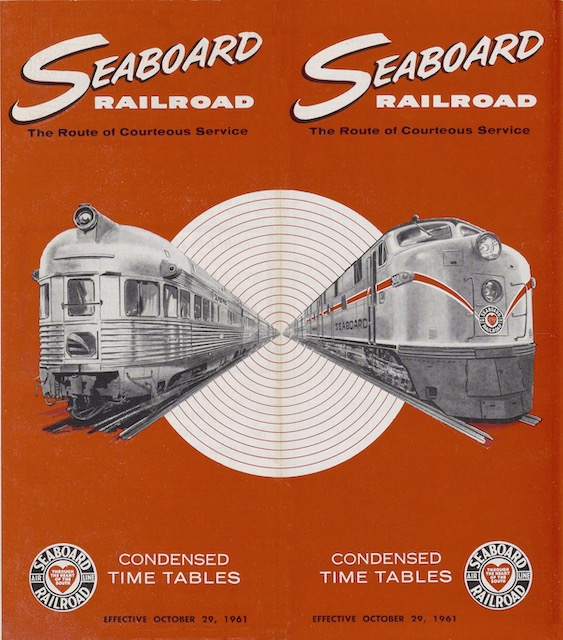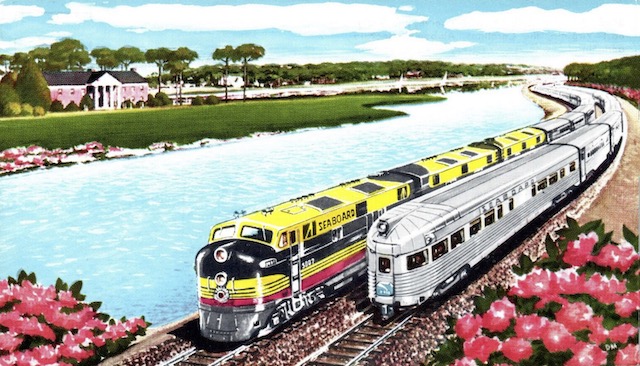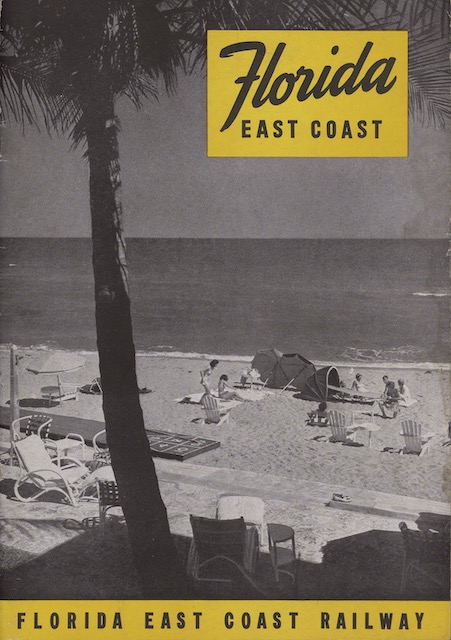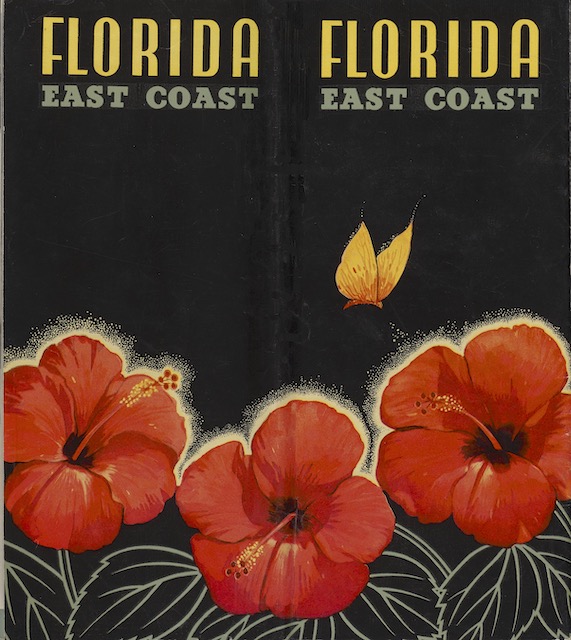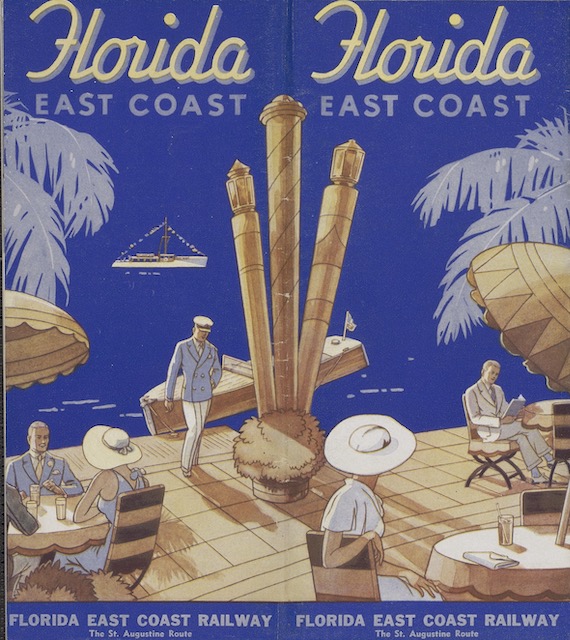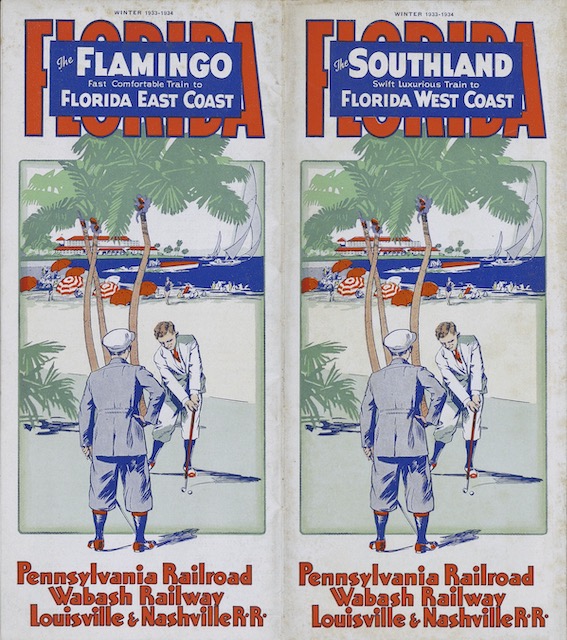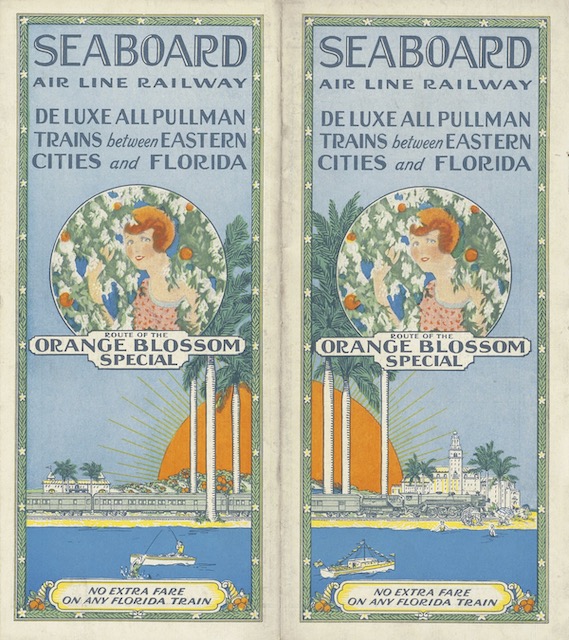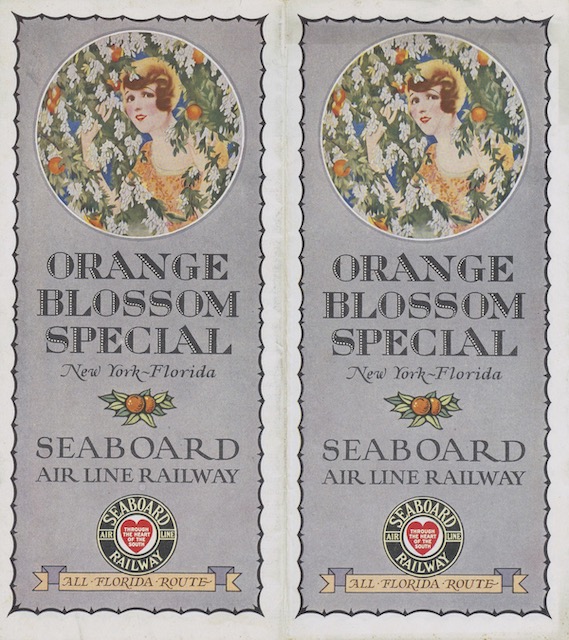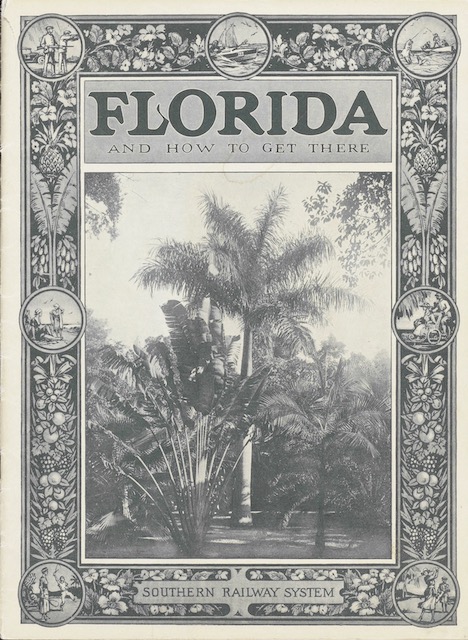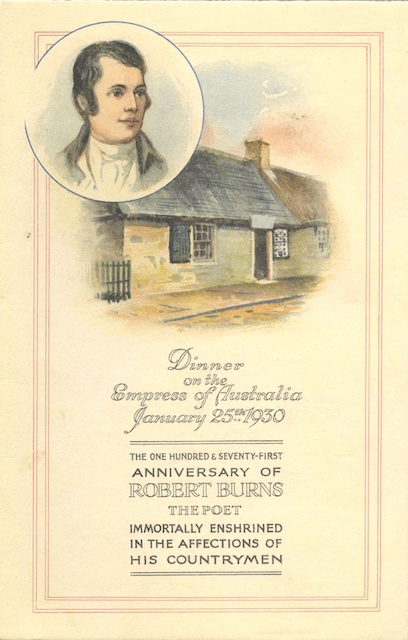Like the Seaboard, Atlantic Coast Line still had a lot of Florida trains in the 1960s. At the top of the list was the New York-Naples/Miami Champion, ACL’s answer to Seaboard’s Silver Meteor. In addition, there was the New York-St. Petersburg Gulf Coast Special and the Washington-Jacksonville Everglades.
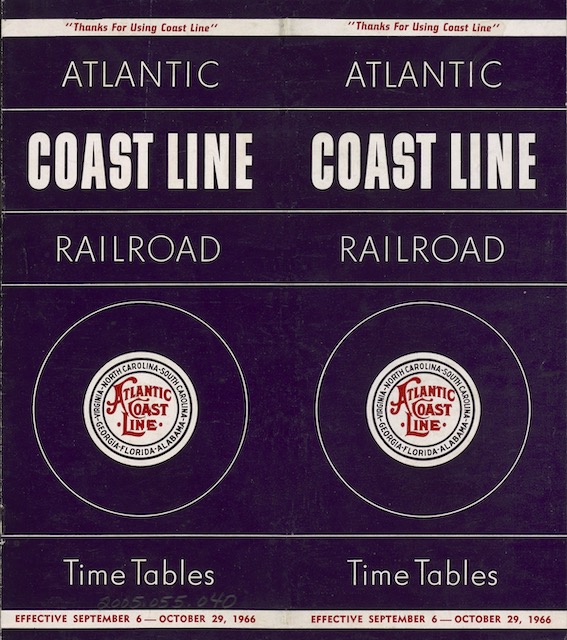 Click image to download a 12.3-MB PDF of this timetable from the Touchton Map Library.
Click image to download a 12.3-MB PDF of this timetable from the Touchton Map Library.
Trains from the Midwest were timed to meet the Champion or Gulf Coast Special in Jacksonville, sending through cars down the West or East coasts. The Chicago-Miami/Naples City of Miami went over Illinois Central and Central of Georgia tracks to Albany, Georgia and met the Champion in Jacksonville. Similarly, the Chicago-Miami/Naples South Wind went over Pennsylvania and Louisville & Nashville tracks to Montgomery, Alabama and also met the Champion in Jacksonville. The Southern Railway’s Dixie Flyer went from Cincinnati to Atlanta and then went on ACL tracks to Jacksonville, where it met the Champion. Finally, the Seminole followed the same routing as the City of Miami but met the Gulf Coast Special in Jacksonville. Continue reading

